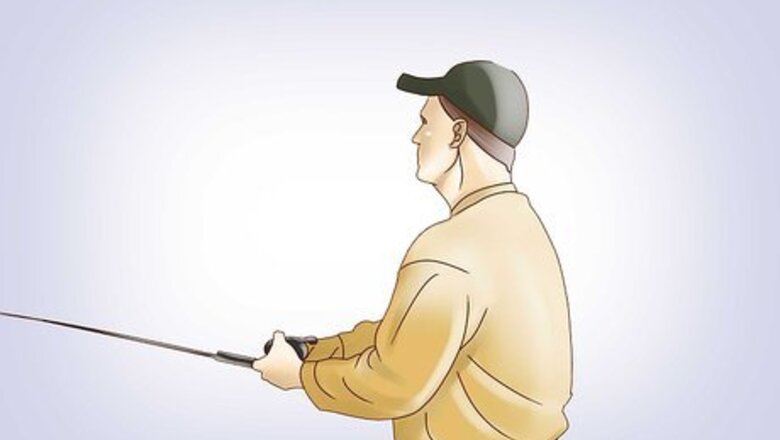
views
Finding Flounder
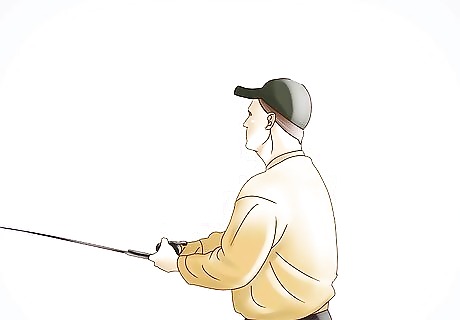
Fish saltwater areas on the Atlantic coast. Flounder can be found up and down the Atlantic coast of the U.S. in rivers, estuaries and streams near the ocean, where they migrate in the fall. Flounder fishing is especially popular in Southeastern states such as Florida, Alabama, and South Carolina, but flounder are also plentiful in the Northeastern coastal areas. There are often restrictions on the size and/or number of fish you can catch, so check your local ordinances. You may need a fishing license to fish in your area as well.
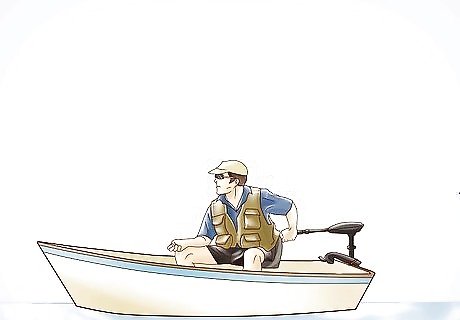
Fish for flounder when they migrate. Flounder can actually be fished all year round, but they're easier to catch in the fall, between September and November, when they migrate toward the ocean. They spawn during the spring and summer, and when they're large enough, the swim to the ocean to spend the winter there before coming back. If you want to fish for flounder in the winter and spring, you certainly can; however, expect to catch smaller flounder that may not be large enough to keep. Check local fishing reports in the area you plan to catch flounder before you plan your trip.
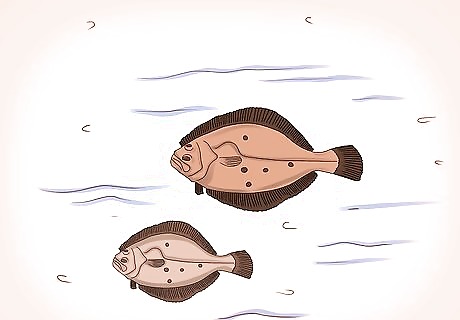
Look for flounder near the bottom. Flounder tend to lie on their sides at the bottom of the river, estuary or coastal area where they reside. One particularly large species of flounder is called a "doormat," referring to its shape and preference for residing low to the ground. Flounder are grayish-brown with lighter spots, helping them blend in with sandy, pebbled riverbeds and estuaries. Flounder have both eyes on the same side of their head, enabling them to see what's happening above them as they lie on their sides.
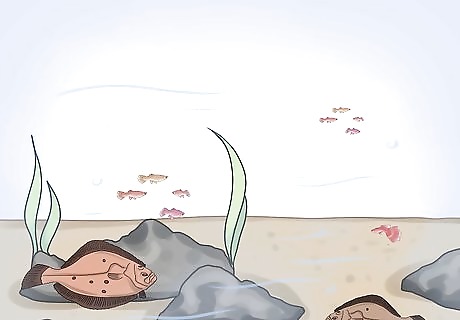
Look for flounder under ledges. Flounder like to stay near ledges and dropoffs, where they can ambush passing fish. Find areas where the current runs from shallow to deeper water, and you're likely to spot flounder there as well as in seams. One good way to figure out where the ledges and drop-offs are is by wading the area before you cast your line. Feel around with your feet to discover the best hiding places for flounder.
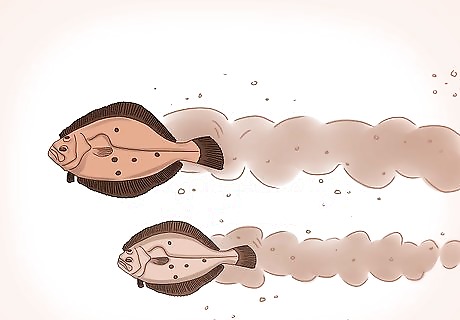
Check for flounder tracks. Since flounder stay close to the ground, they leave tracks in their wake when they move away to feed. Getting familiar with these telltale tracks while the tide is low should tell you where you can find flounder when they come back in with high tide. Getting to know the area where you want to fish is the best way to get lucky with flounder. Take several trips to the area at both low and high tide to get more familiar with the fish's habits.
Choosing Bait and Tackle
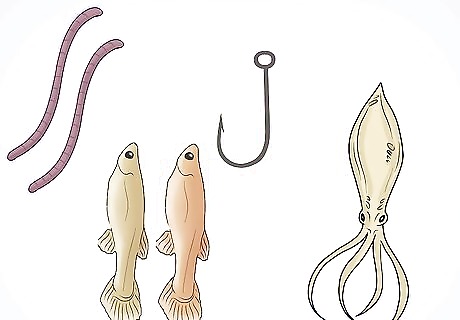
Use live baitfish. Flounder respond well to live fish such as minnow, mullet and croakers. Sea worms and clams are also effective. Hook larger baitfish through the lips, and smaller baitfish through the eye. You can add some strips of fresh squid or live shrimp to vary the bait mix. Hot dogs can also work well. If one type of bait doesn't seem to be working, try another. Flounder can be picky, and they won't always bite, even if they liked a certain type of bait in the past. Consider catching your own live bait in the area where you're fishing for flounder.

Try artificial bait. If live bait is hard to come by in your area, or if you want to vary things up, use red, pink, white or yellow grub-tailed jigs. Sometimes flounder actually prefer artificial bait, so it's a good idea to have some on hand if you aren't having luck with live bait.
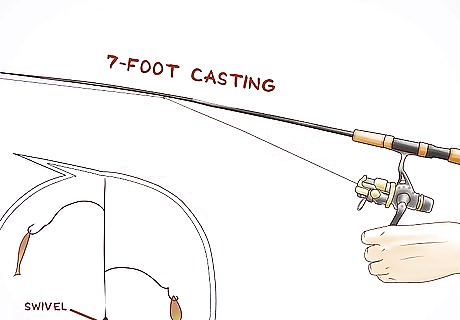
Set up your tackle. A medium 7 ft (2.1 m) casting rod is standard for catching flounder. Use line that's sturdy enough to handle larger fish that might take the bait, such as 14 lb (6.4 kg) or so. Use a circle hook, which is easier for flounder to bite. You'll also need a sinker to make sure the hook is within reach of flounder down below.
Using Effective Techniques
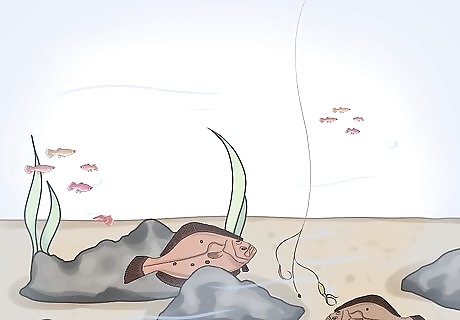
Drop your bait to the bottom and let it drift. Flounder typically stay in one place on the bottom, and you'll need the bait to cross their path to hook one. While it is possible to fish for flounder from a stationary location, you're a lot less likely to catch one this way. Flounder fishing is easily done from a boat, since you can let it slowly drift and entice the fish with your moving bait. Try to find a current that will move you steadily along the surface of the water without carrying you along too quickly for fish to bite. Make sure you can feel the surface of the bottom. If you can't, you may not be using enough weight. Attach a small weight (the size of a BB) about 12–18 inches (30–46 cm) above your rig to ensure that your bait stays along the bottom.

Wait a few sections before reeling in a fish. Since flounder lie sideways on the ground, it takes a few extra seconds for them to get a grip on the bait. Before reeling the fish in, wait about 5 seconds to make sure its mouth is definitely hooked.
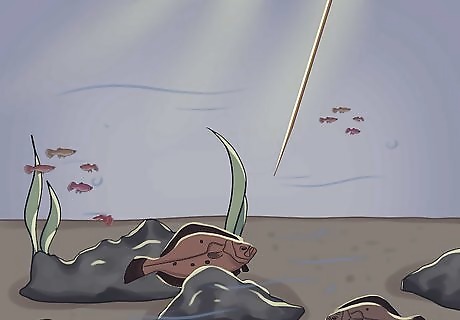
Try gigging. You can also catch flounder by "gigging," which is essentially spearing the fish with a barbed spike. You wade through shallow water at night while the fish are stationary and spear them. Aim low because the water will bend light down, making the fish appear a little further away than it actually is.


















Comments
0 comment